Search Result
Results for "
D-amino
" in MedChemExpress (MCE) Product Catalog:
2
Biochemical Assay Reagents
1
Isotope-Labeled Compounds
| Cat. No. |
Product Name |
Target |
Research Areas |
Chemical Structure |
-
- HY-P2986
-
|
|
Endogenous Metabolite
|
Metabolic Disease
|
|
D-Amino acid oxidase is an enzyme to metabolize exogenous D-amino acids in animals for detoxifying action. D-Amino acid oxidase also modulates the level of D-serine in brain .
|
-
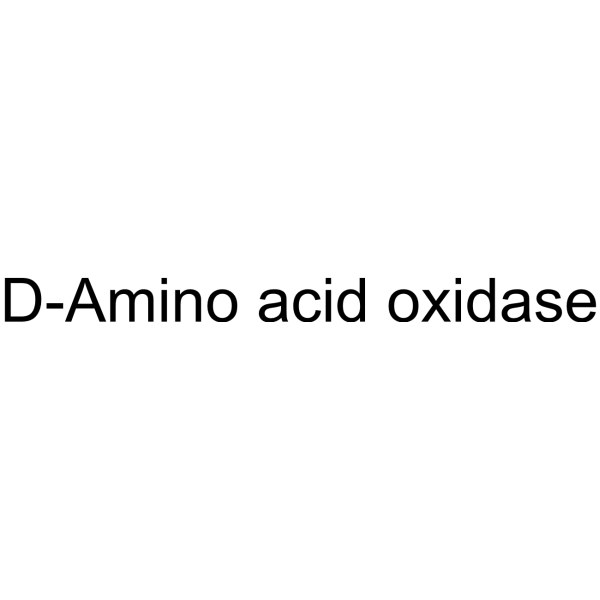
-
- HY-W014502
-
|
|
Aryl Hydrocarbon Receptor
Endogenous Metabolite
|
Cancer
|
|
D-kynurenine, a metabolite of D-tryptophan, can serve as the bioprecursor of kynurenic acid (KYNA) and 3-hydroxykynurenine. D-Kynurenine is an agonist for G protein-coupled receptor, GPR109B. D-Kynurenine is a substrate in a fluorometric assay of D-amino acid oxidase. D-kynurenine promotes epithelial-to-mesenchymal transition via activating aryl hydrocarbon receptor (AHR) .
|
-
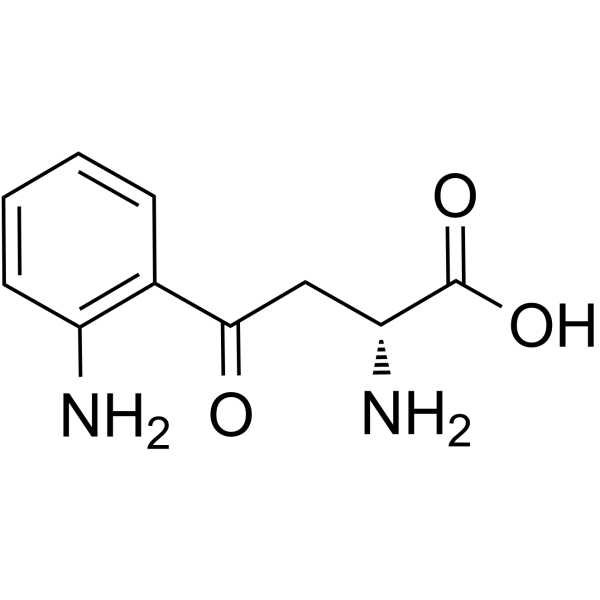
-
- HY-Y0127
-
-
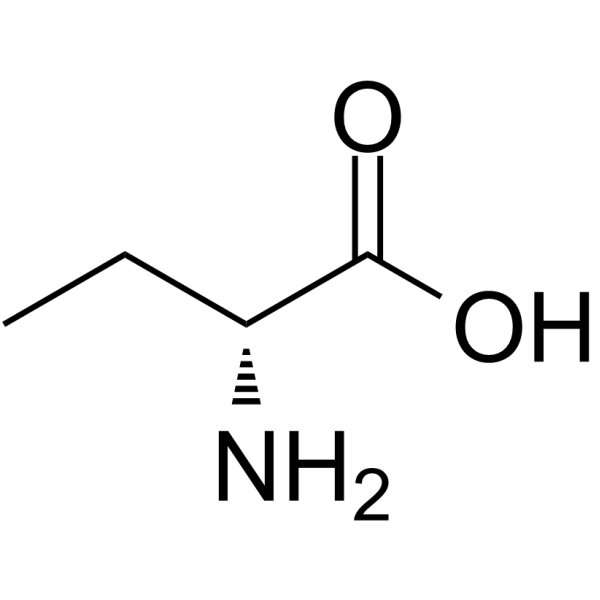
-
- HY-P10110
-
|
|
Autophagy
|
Neurological Disease
|
|
retro-inverso TAT-Beclin 1 D-amino acid is has higher activity and resistance to proteolytic degradation in vivo compared to L-amino acids peptide. TAT-Beclin 1 can induce autophagy in peripheral tissues in adult mice as well as in the central nervous system of neonatal mice .
|
-

-
- HY-D1697
-
|
|
Fluorescent Dye
|
Infection
|
|
OGDA is a green fluorescent D-amino acid. OGDA is suitable for labeling peptidoglycan in Gram-positive and Gram-negative bacteria .
|
-

-
- HY-W018555
-
|
|
Endogenous Metabolite
Bacterial
|
Infection
Neurological Disease
|
|
D-Cysteine is the D-isomer of cysteine and a powerful inhibitor of Escherichia coli growth. D-cysteine is mediated by D-amino acid oxidase to produce H2S and is a neuroprotectant against cerebellar ataxias. D-Cysteine could inhibit the growth and cariogenic virulence of dual-species biofilms formed by S. mutans and S. sanguinis .
|
-
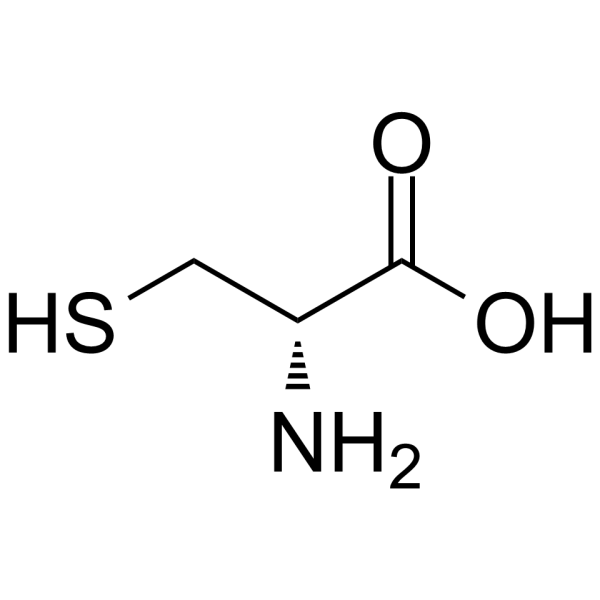
-
- HY-33009
-
|
|
Others
|
Neurological Disease
|
|
AS057278 is a potent, selective, orally active and blood-brain barrier (BBB) penetrant non-peptidic D-amino acid oxidase (DAAO) inhibitor with an IC50 value of 0.91 μM and EC50 of 2.2-3.95 μM. AS057278 can normalize phencyclidine (PCP)-induced prepulse inhibition in mice. AS057278 can be used for researching schizophrenia .
|
-
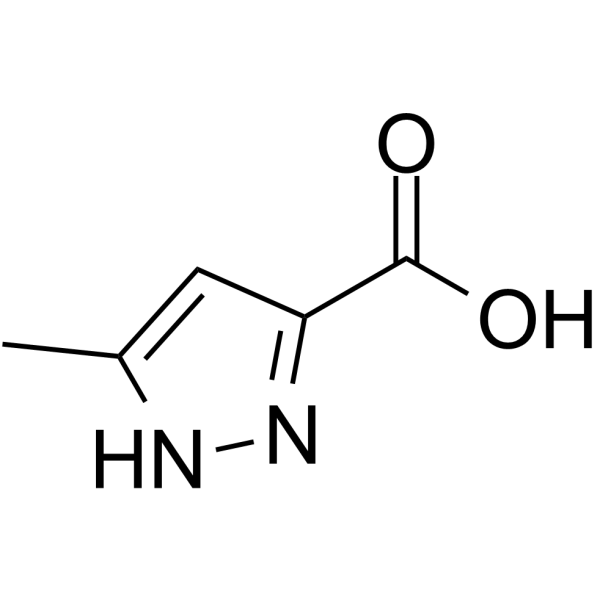
-
- HY-111412
-
-
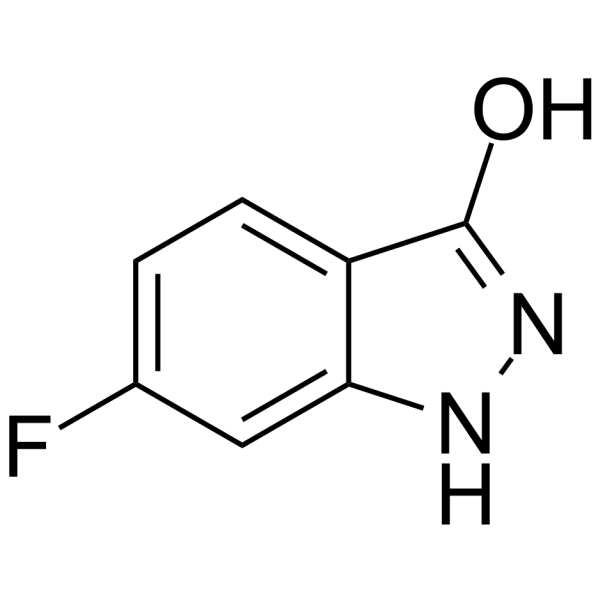
-
- HY-117292
-
|
|
Others
|
Neurological Disease
|
|
DAO-IN-2 is a novel D-amino acid oxidase (DAO) inhibitor. DAO-IN-2 demonstrates moderate potency for DAO in vitro and ex vivo .
|
-
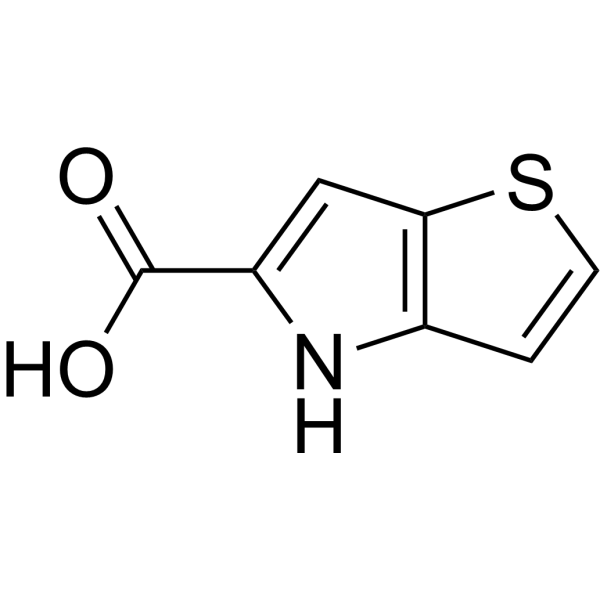
-
- HY-D1689
-
|
|
Bacterial
|
Infection
|
|
Rf470DL is a rotor-fluorogenic D-amino acid (RfDAA). Rf470DL can be used for labeling bacteria (Ex=470 nm, Em=640 nm) .
|
-
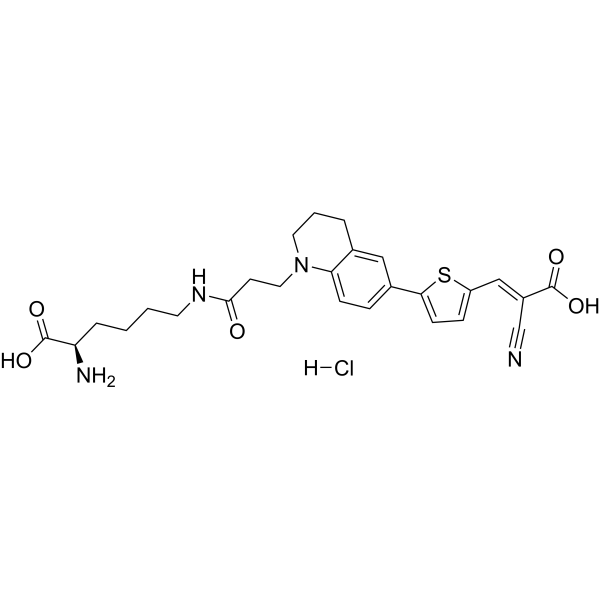
-
- HY-D1117
-
|
NADA hydrochloride
|
Fluorescent Dye
|
Infection
|
|
NADA-green is a fluorescent D-amino acid probe. NADA-green is efficiently incorporated into the peptidoglycan of diverse bacterial species peptidoglycan biosynthesis. NADA-green allows probing of bacterial growth with minimal perturbation .
|
-

-
- HY-Y0127S
-
-
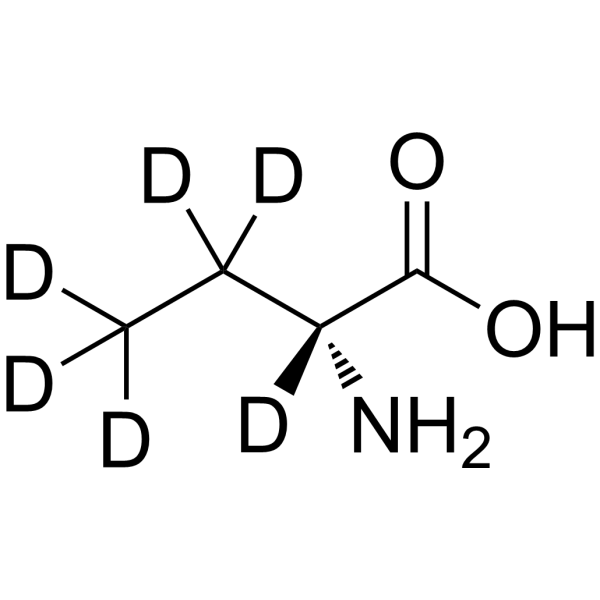
-
- HY-W037417
-
|
|
Others
|
Others
|
|
DAO-IN-1 is a potent inhibitor of D-amino acid oxidase (DAO) with an IC50 value of 269 nM. DAO is an enzyme responsible for D-serine metabolism, D-serine is a co-agonist of NMDA receptors .
|
-
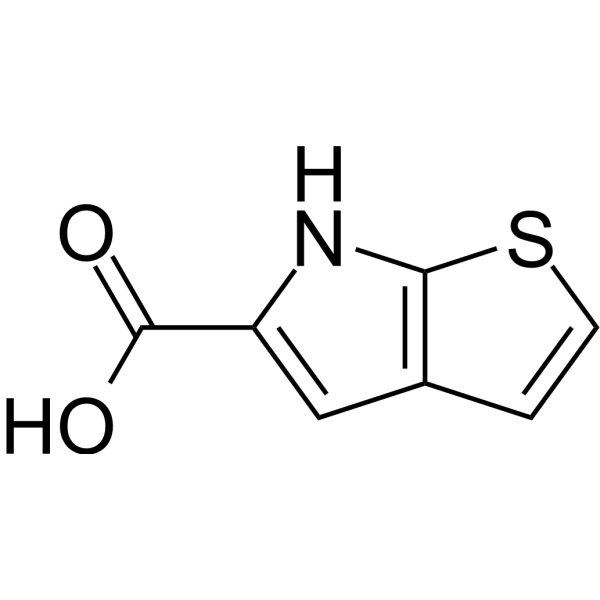
-
- HY-131045
-
|
HCC-amino-D-alanine hydrochloride
|
Bacterial
|
Infection
|
|
HADA hydrochloride (HCC-Amino-D-alanine hydrochloride) is a blue (λem~450 nm) fluorescent D-amino acid (FDAA). FDAAs are efficiently incorporated into the peptidoglycans (PGs) of diverse bacterial species at the sites of PG biosynthesis, allowing specific and covalent probing of bacterial growth with minimal perturbation .
|
-
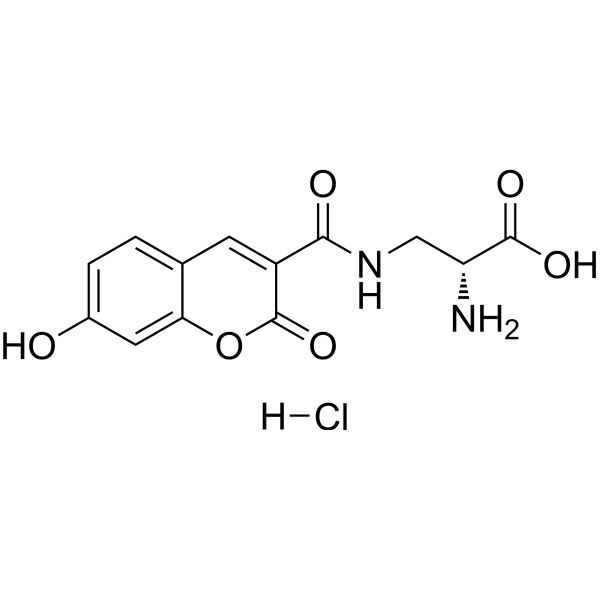
-
- HY-109183
-
|
TAK-831
|
Others
|
Others
|
|
Luvadaxistat (TAK-831) is an orally active, highly selective, potent D-amino acid oxidase (DAAO) inhibitor. Luvadaxistat inhibits oxidative deamination of D-serine via the human recombinant DAAO enzyme with an IC50 of 14 nM. Luvadaxistat significantly increases D-serine levels in the rodent brain, plasma, and cerebrospinal fluid. Luvadaxistat has the potential for schizophrenia research .
|
-
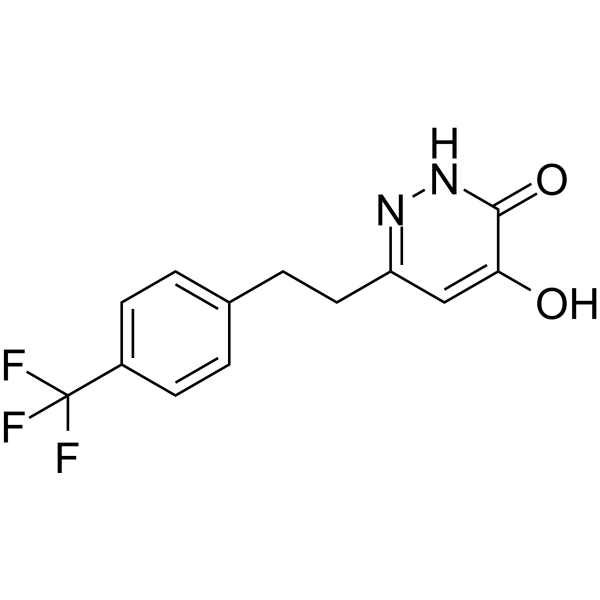
-
- HY-W014502R
-
|
|
Aryl Hydrocarbon Receptor
Endogenous Metabolite
|
Cancer
|
|
D-Kynurenine (Standard) is the analytical standard of D-Kynurenine. This product is intended for research and analytical applications. D-kynurenine, a metabolite of D-tryptophan, can serve as the bioprecursor of kynurenic acid (KYNA) and 3-hydroxykynurenine. D-Kynurenine is an agonist for G protein-coupled receptor, GPR109B. D-Kynurenine is a substrate in a fluorometric assay of D-amino acid oxidase. D-kynurenine promotes epithelial-to-mesenchymal transition via activating aryl hydrocarbon receptor (AHR) .
|
-
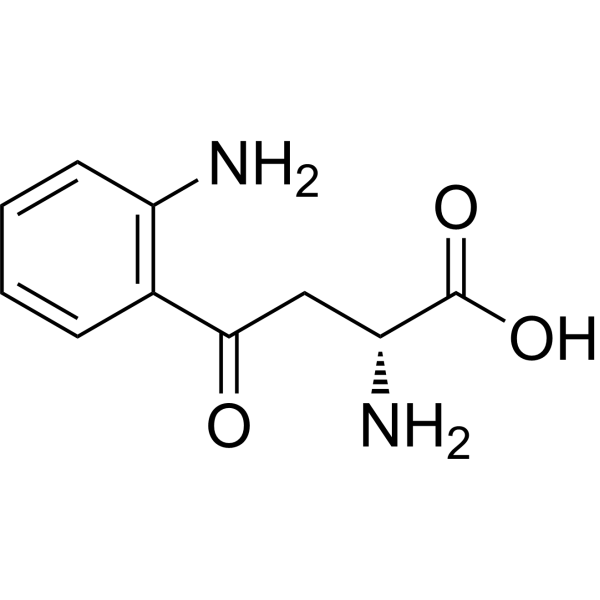
-
- HY-P4160
-
|
THG113.31; ILGHXDYK
|
Prostaglandin Receptor
|
Endocrinology
|
|
PDC31 (THG113.31; ILGHXDYK) is an allosteric and non-competitive inhibitor of FP Prostaglandin Receptor. PDC31 is the D-amino acid-based oligopeptide, is used for smooth muscle contractile agent. PDC31 decreases the strength and duration of uterine contractions in vivo, which can be used for research of preterm labor and primary dysmenorrhea (PD). PDC31 also enhances Ca 2+-dependent large-conductance K +-channel in human myometrial cells .
|
-
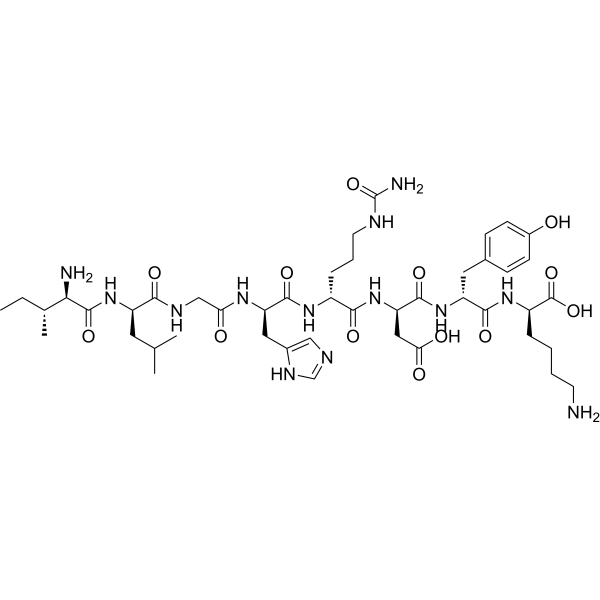
-
- HY-P1925A
-
|
|
PI3K
Reactive Oxygen Species
Apoptosis
|
Cancer
|
|
GO-203 TFA is a potent MUC1-C oncoprotein inhibitor. GO-203 TFA is an all D-amino acid peptide that consists of a poly-R transduction domain linked to a CQCRRKN motif that binds to the MUC1-C cytoplasmic tail and blocks MUC1-C homodimerization. GO-203 TFA downregulates TIGAR (TP53-induced glycolysis and apoptosis regulator) protein synthesis by inhibiting the PI3K-AKT-S6K1 pathway. GO-203 TFA induces the production of ROS and loss of mitochondrial transmembrane potential. GO-203 TFA inhibits the growth of colon cancer cells in vitro and as xenografts in nude mice .
|
-

-
- HY-P1340
-
|
|
Orexin Receptor (OX Receptor)
|
Neurological Disease
|
|
[Ala11,D-Leu15]-Orexin B(human) is a potent and selective orexin-2 receptor (OX2) agonist. [Ala11,D-Leu15]-Orexin B(human) shows a 400-fold selectivity for the OX2 (EC50=0.13 nM) over OX1 (52 nM) .
|
-
![[Ala11,D-Leu15]-Orexin B(human)](//file.medchemexpress.com/product_pic/hy-p1340.gif)
-
- HY-P1340A
-
|
|
Orexin Receptor (OX Receptor)
|
Neurological Disease
|
|
[Ala11,D-Leu15]-Orexin B(human) TFA is a potent and selective orexin-2 receptor (OX2) agonist. [Ala11,D-Leu15]-Orexin B(human) TFA shows a 400-fold selectivity for the OX2 (EC50=0.13 nM) over OX1 (52 nM) .
|
-
![[Ala11,D-Leu15]-Orexin B(human) TFA](//file.medchemexpress.com/product_pic/hy-p1340a.gif)
-
- HY-Y0444
-
|
|
Tyrosinase
|
Metabolic Disease
|
|
D-Tyrosine is the D-isomer of tyrosine. D-Tyrosine negatively regulates melanin synthesis by inhibiting tyrosinase activity. D-Tyrosine inhibits biofilm formation and trigger the self-dispersal of biofilms without suppressing bacterial growth .
|
-
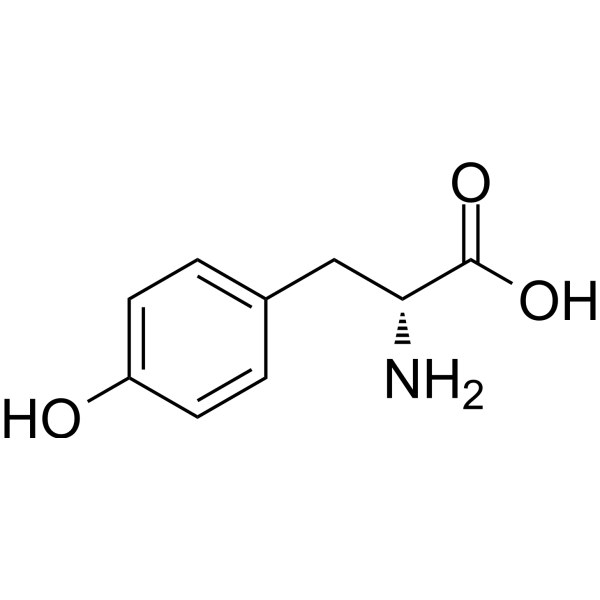
-
- HY-P10341
-
|
|
GCGR
|
Metabolic Disease
|
|
ZP3022 is a dual agonist of glucagon-like peptide-1 (GLP-1) and gastrin, which has the ability to continuously improve glycemic control. Meanwhile, ZP3022 can effectively increase the mass of β-cells, promote β-cell proliferation, and enhance the average islet mass. ZP3022 can be used in research for anti-diabetic treatments .
|
-

-
- HY-P4146
-
|
BI 456906
|
GLP Receptor
GCGR
|
Metabolic Disease
|
|
Survodutide (BI 456906) is a potent, selective glucagon receptor/GLP-1 receptor (GCGR/GLP-1R) dual agonist with EC50s of 0.52 nM and 0.33 nM in CHO-K1 cells, respectively. Survodutide, a 29-amino-acid peptide, is a potent acylated peptide containing a C18 fatty acid. Survodutide has robust anti-obesity efficacy achieved by increasing energy expenditure and decreasing food intake .
|
-

-
- HY-P4146A
-
|
BI 456906 TFA
|
GLP Receptor
GCGR
|
Metabolic Disease
|
|
Survodutide (BI 456906) TFA is a potent, selective glucagon receptor/GLP-1 receptor (GCGR/GLP-1R) dual agonist with EC50s of 0.52 nM and 0.33 nM in CHO-K1 cells, respectively. Survodutide TFA, a 29-amino-acid peptide, is a potent acylated peptide containing a C18 fatty acid. Survodutide TFA has robust anti-obesity efficacy achieved by increasing energy expenditure and decreasing food intake .
|
-

-
- HY-P2434
-
|
|
Somatostatin Receptor
|
Neurological Disease
Metabolic Disease
Cancer
|
|
AP102 is a dual SSTR2/SSTR5-specific somatostatin analog (SSA). AP102 is a disulfide-bridged octapeptide SSA containing synthetic iodinated amino acids. AP102 binds with subnanomolar affinity to SSTR2 and SSTR5 (IC50: 0.63 and 0.65 nM, respectively). AP102 does not bind to SSTR1 or SSTR3. AP102 can be used for acromegaly and neuroendocrine tumors research .
|
-
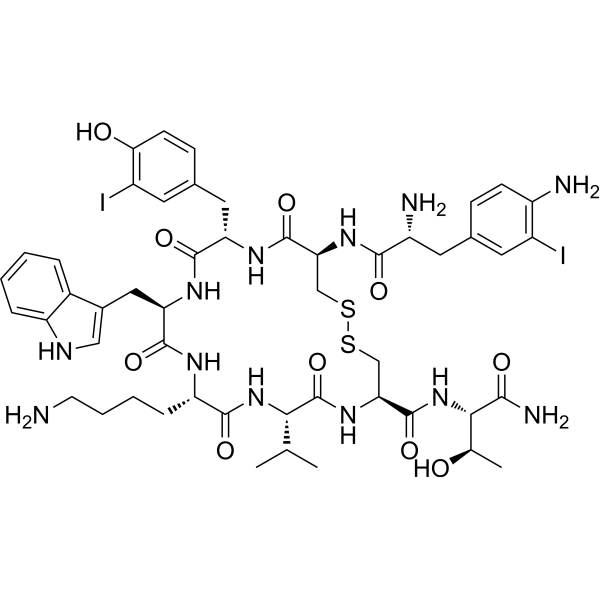
-
- HY-P5362
-
|
|
Somatostatin Receptor
|
Cancer
|
|
NODAGA-LM3 can be labeled by 68Ga for PET imaging. 68Ga-NODAGA-LM3 is a SSTR2 antagonist, and can be used for imaging of SSTR positive paragangliomas .
|
-
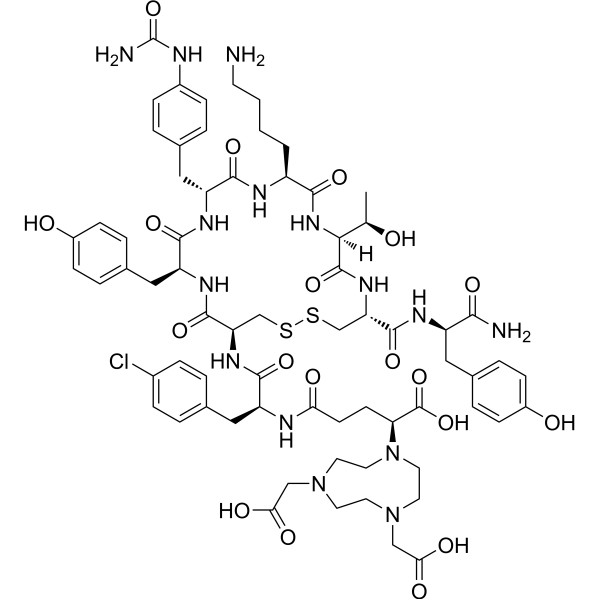
-
- HY-P5362A
-
|
|
Somatostatin Receptor
|
Cancer
|
|
NODAGA-LM3 TFA can be labeled by 68Ga for PET imaging. 68Ga-NODAGA-LM3 TFA is a SSTR2 antagonist, and can be used for imaging of SSTR positive paragangliomas .
|
-

-
- HY-105168
-
|
|
Endothelin Receptor
|
Cardiovascular Disease
|
|
TAK 044 is an antagonist of Endothelin Receptor. TAK 044 strongly inhibits ET-induced deterioration in various animal models. TAK 044 can be used in study ET-related diseases such as acute myocardial infarction,acute renal failure, acute hepatic malfunction, and subarachnoid hemorrhage .
|
-
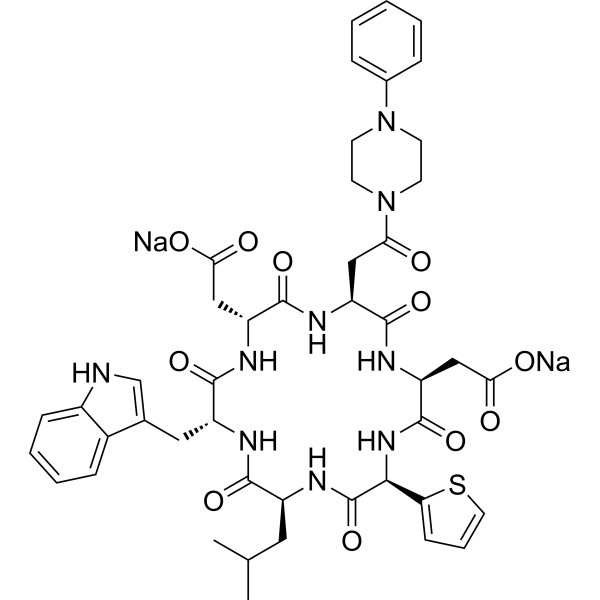
| Cat. No. |
Product Name |
Type |
-
- HY-D1117
-
|
NADA hydrochloride
|
Fluorescent Dyes/Probes
|
|
NADA-green is a fluorescent D-amino acid probe. NADA-green is efficiently incorporated into the peptidoglycan of diverse bacterial species peptidoglycan biosynthesis. NADA-green allows probing of bacterial growth with minimal perturbation .
|
-
- HY-131045
-
|
HCC-amino-D-alanine hydrochloride
|
Dyes
|
|
HADA hydrochloride (HCC-Amino-D-alanine hydrochloride) is a blue (λem~450 nm) fluorescent D-amino acid (FDAA). FDAAs are efficiently incorporated into the peptidoglycans (PGs) of diverse bacterial species at the sites of PG biosynthesis, allowing specific and covalent probing of bacterial growth with minimal perturbation .
|
-
- HY-D1689
-
|
|
Fluorescent Dyes/Probes
|
|
Rf470DL is a rotor-fluorogenic D-amino acid (RfDAA). Rf470DL can be used for labeling bacteria (Ex=470 nm, Em=640 nm) .
|
| Cat. No. |
Product Name |
Type |
-
- HY-P2986
-
|
|
Biochemical Assay Reagents
|
|
D-Amino acid oxidase is an enzyme to metabolize exogenous D-amino acids in animals for detoxifying action. D-Amino acid oxidase also modulates the level of D-serine in brain .
|
-
- HY-Y1662
-
|
E.C. 3.5.1.81; N-Acyl-D-amino acid amidohydrolase; N-Acyl-D-amino-acid deacylase
|
Biochemical Assay Reagents
|
|
D-Amino acid acylase E.C. 3.5.1.81 is a biochemical reagent that can be used as a biological material or organic compound for life science related research.
|
| Cat. No. |
Product Name |
Target |
Research Area |
-
- HY-P4160
-
|
THG113.31; ILGHXDYK
|
Prostaglandin Receptor
|
Endocrinology
|
|
PDC31 (THG113.31; ILGHXDYK) is an allosteric and non-competitive inhibitor of FP Prostaglandin Receptor. PDC31 is the D-amino acid-based oligopeptide, is used for smooth muscle contractile agent. PDC31 decreases the strength and duration of uterine contractions in vivo, which can be used for research of preterm labor and primary dysmenorrhea (PD). PDC31 also enhances Ca 2+-dependent large-conductance K +-channel in human myometrial cells .
|
-
- HY-P1925A
-
|
|
PI3K
Reactive Oxygen Species
Apoptosis
|
Cancer
|
|
GO-203 TFA is a potent MUC1-C oncoprotein inhibitor. GO-203 TFA is an all D-amino acid peptide that consists of a poly-R transduction domain linked to a CQCRRKN motif that binds to the MUC1-C cytoplasmic tail and blocks MUC1-C homodimerization. GO-203 TFA downregulates TIGAR (TP53-induced glycolysis and apoptosis regulator) protein synthesis by inhibiting the PI3K-AKT-S6K1 pathway. GO-203 TFA induces the production of ROS and loss of mitochondrial transmembrane potential. GO-203 TFA inhibits the growth of colon cancer cells in vitro and as xenografts in nude mice .
|
-
- HY-P1340
-
|
|
Orexin Receptor (OX Receptor)
|
Neurological Disease
|
|
[Ala11,D-Leu15]-Orexin B(human) is a potent and selective orexin-2 receptor (OX2) agonist. [Ala11,D-Leu15]-Orexin B(human) shows a 400-fold selectivity for the OX2 (EC50=0.13 nM) over OX1 (52 nM) .
|
-
- HY-P10110
-
|
|
Autophagy
|
Neurological Disease
|
|
retro-inverso TAT-Beclin 1 D-amino acid is has higher activity and resistance to proteolytic degradation in vivo compared to L-amino acids peptide. TAT-Beclin 1 can induce autophagy in peripheral tissues in adult mice as well as in the central nervous system of neonatal mice .
|
-
- HY-P1340A
-
|
|
Orexin Receptor (OX Receptor)
|
Neurological Disease
|
|
[Ala11,D-Leu15]-Orexin B(human) TFA is a potent and selective orexin-2 receptor (OX2) agonist. [Ala11,D-Leu15]-Orexin B(human) TFA shows a 400-fold selectivity for the OX2 (EC50=0.13 nM) over OX1 (52 nM) .
|
-
- HY-P3325
-
|
D-P8RI
|
Peptides
|
Inflammation/Immunology
|
|
P8RI (D-P8RI) is a biomimetic peptide of CD31 and a CD31 agonist. P8RI binds to the juxtamembrane amino acid sequence of the ectodomain of CD31, shows an immunosuppressive effect through restoration of the CD31 inhibitory pathway .
|
-
- HY-P4757
-
|
|
Peptides
|
Others
|
|
N1-Glutathionyl-spermidine disulfide is a substrate of trypanothione reductase .
|
-
- HY-P10341
-
|
|
GCGR
|
Metabolic Disease
|
|
ZP3022 is a dual agonist of glucagon-like peptide-1 (GLP-1) and gastrin, which has the ability to continuously improve glycemic control. Meanwhile, ZP3022 can effectively increase the mass of β-cells, promote β-cell proliferation, and enhance the average islet mass. ZP3022 can be used in research for anti-diabetic treatments .
|
-
- HY-P4146
-
|
BI 456906
|
GLP Receptor
GCGR
|
Metabolic Disease
|
|
Survodutide (BI 456906) is a potent, selective glucagon receptor/GLP-1 receptor (GCGR/GLP-1R) dual agonist with EC50s of 0.52 nM and 0.33 nM in CHO-K1 cells, respectively. Survodutide, a 29-amino-acid peptide, is a potent acylated peptide containing a C18 fatty acid. Survodutide has robust anti-obesity efficacy achieved by increasing energy expenditure and decreasing food intake .
|
-
- HY-P4146A
-
|
BI 456906 TFA
|
GLP Receptor
GCGR
|
Metabolic Disease
|
|
Survodutide (BI 456906) TFA is a potent, selective glucagon receptor/GLP-1 receptor (GCGR/GLP-1R) dual agonist with EC50s of 0.52 nM and 0.33 nM in CHO-K1 cells, respectively. Survodutide TFA, a 29-amino-acid peptide, is a potent acylated peptide containing a C18 fatty acid. Survodutide TFA has robust anti-obesity efficacy achieved by increasing energy expenditure and decreasing food intake .
|
-
- HY-P2434
-
|
|
Somatostatin Receptor
|
Neurological Disease
Metabolic Disease
Cancer
|
|
AP102 is a dual SSTR2/SSTR5-specific somatostatin analog (SSA). AP102 is a disulfide-bridged octapeptide SSA containing synthetic iodinated amino acids. AP102 binds with subnanomolar affinity to SSTR2 and SSTR5 (IC50: 0.63 and 0.65 nM, respectively). AP102 does not bind to SSTR1 or SSTR3. AP102 can be used for acromegaly and neuroendocrine tumors research .
|
-
- HY-P5362
-
|
|
Somatostatin Receptor
|
Cancer
|
|
NODAGA-LM3 can be labeled by 68Ga for PET imaging. 68Ga-NODAGA-LM3 is a SSTR2 antagonist, and can be used for imaging of SSTR positive paragangliomas .
|
-
- HY-P5362A
-
|
|
Somatostatin Receptor
|
Cancer
|
|
NODAGA-LM3 TFA can be labeled by 68Ga for PET imaging. 68Ga-NODAGA-LM3 TFA is a SSTR2 antagonist, and can be used for imaging of SSTR positive paragangliomas .
|
-
- HY-105168
-
|
|
Endothelin Receptor
|
Cardiovascular Disease
|
|
TAK 044 is an antagonist of Endothelin Receptor. TAK 044 strongly inhibits ET-induced deterioration in various animal models. TAK 044 can be used in study ET-related diseases such as acute myocardial infarction,acute renal failure, acute hepatic malfunction, and subarachnoid hemorrhage .
|
| Cat. No. |
Product Name |
Category |
Target |
Chemical Structure |
| Cat. No. |
Compare |
Product Name |
Species |
Source |
Compare Products
|
| Products |
|
| Cat. No. |
|
| Species |
|
| Source |
|
| Tag |
|
| Accession |
|
| Gene ID |
|
| Molecular Weight |
|
| Purity |
|
| Endotoxin Level |
|
| Biological Activity |
|
| Appearance |
|
| Formulation |
|
| Storage & Stability |
|
| Shipping |
|
| Free Sample |
Yes
No
|
| Size |
* This product has been "discontinued".
Optimized version of product available:
|
| Cat. No. |
Product Name |
Chemical Structure |
-
- HY-Y0127S
-
|
|
|
D(-)-2-Aminobutyric acid-d6 is the deuterium labeled D(-)-2-Aminobutyric acid. D(-)-2-Aminobutyric acid is a substrate of D-amino acid oxidase.
|
-

Your information is safe with us. * Required Fields.
Inquiry Information
- Product Name:
- Cat. No.:
- Quantity:
- MCE Japan Authorized Agent:
























![[Ala11,D-Leu15]-Orexin B(human)](http://file.medchemexpress.com/product_pic/hy-p1340.gif)
![[Ala11,D-Leu15]-Orexin B(human) TFA](http://file.medchemexpress.com/product_pic/hy-p1340a.gif)










